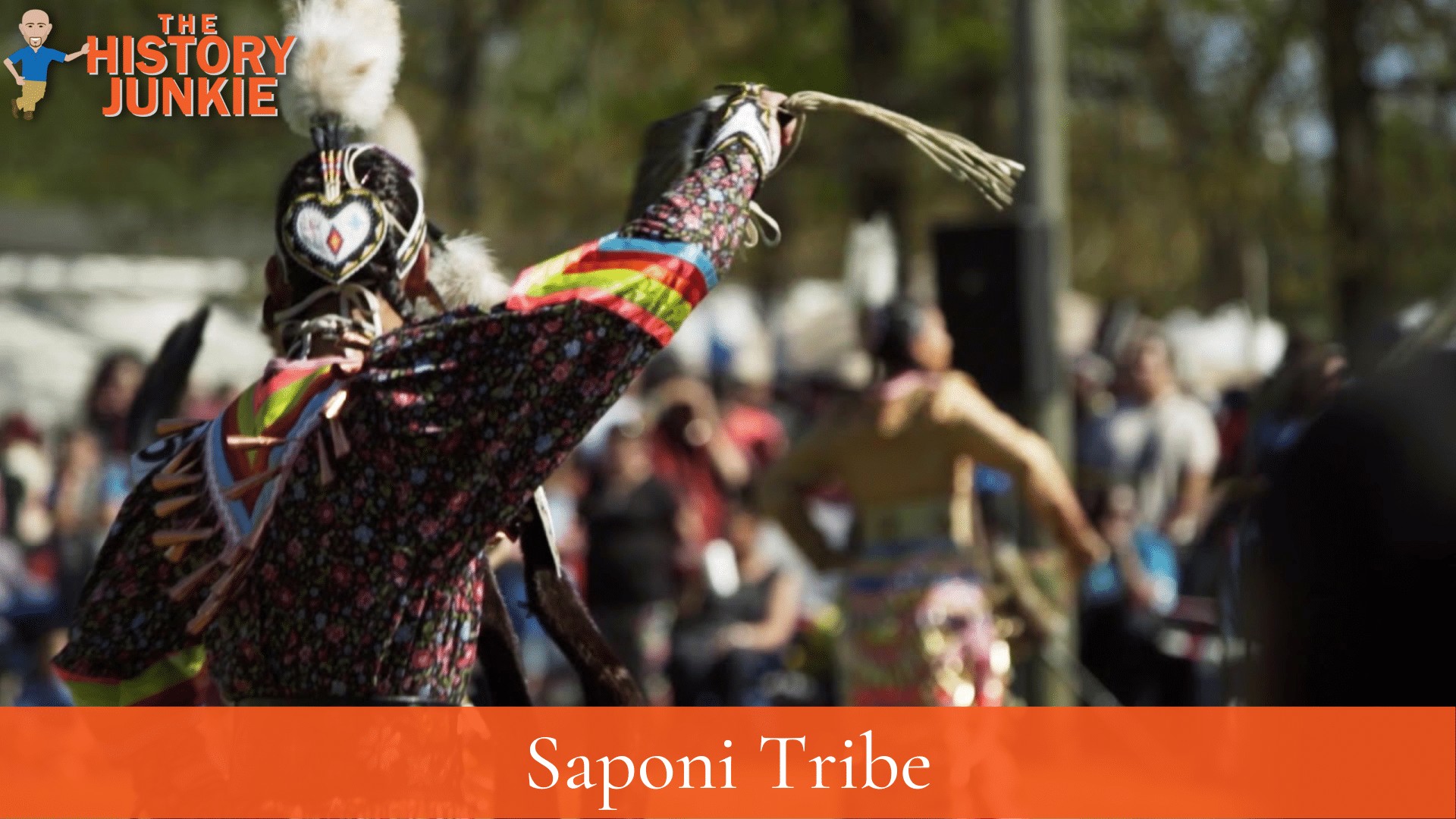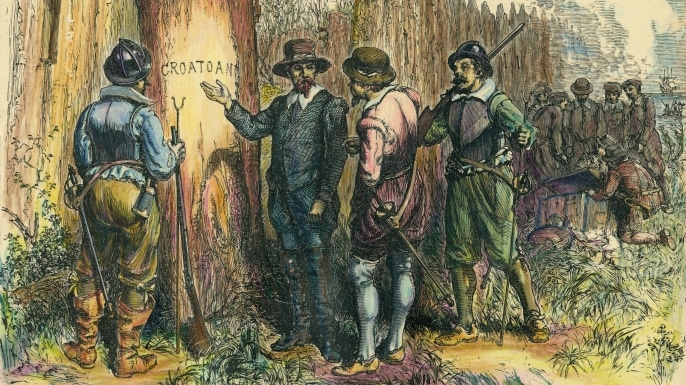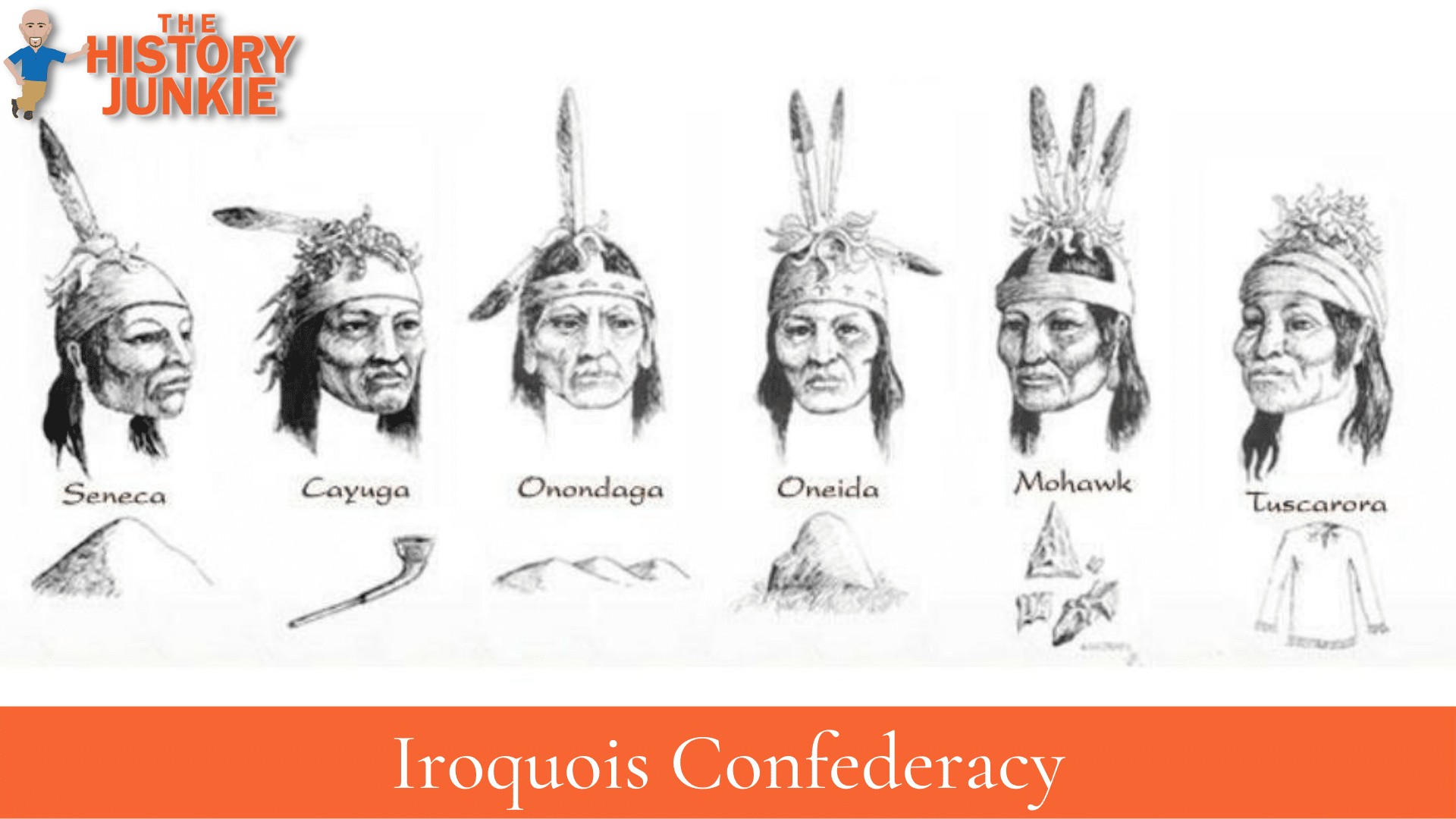
Jump to:
#1. The Saponi Tribe Was First Seen In Virginia
The Saponi Tribe was a Southeast Indian Tribe that had their first contact with Europeans when famous explorer John Smith wrote about them.
Captain John Smith located them in 1607, just two years after the colonists had settled in Jamestown. They were a Siouan-speaking tribe that lived near present-day Charlottesville, Virginia.
The tribe would not stick around long. The Saponi people were known for their mobility and often traveled throughout the southeast to avoid conflict with larger and more powerful tribes.
#2. Legend Has It That They Have A Connection To Roanoke Colony

The lost colony of Roanoke remains a mystery to this day, and since it had a mysterious disappearance, it is subject to many different legends.
One of these legends has to do with the Saponi Tribe.
The Saponi people had a unique occurrence of blue and grey-colored eyes. This is unusual for Native Americans and led some to believe that the Saponi had absorbed the colonists and intermarried.
Most likely, this is not true, and if it is, there is no way to prove it. However, they were located in an area that could lead some to believe it happened. Also, the Saponi did seem not to have issues marrying outside their tribe.
#3. They Merged With The Iroquois

In 1740, the majority of the Saponi and Tutelo moved to Shamokin, Pennsylvania. They surrendered to the Iroquois and joined the latter in New York.
They were formally adopted by the Cayuga Tribe in 1753, though they ultimately ended up in a number of different places.
Shortly after the Revolutionary War, Samuel Kirkland noted a community of them living near Fort Niagara who is later believed to have joined the Mohawk tribe, whereas others continued into Canada alongside the Cayuga.
During the war, they were tasked by the Iroquois to find land near Buffalo, NY, to replant the field destroyed by the Continental Army.
#4. They Sided With The British During The American Revolution
The Saponi tribe was a mobile tribe that moved around quite often. At the time of the American Revolution, they had merged with the Iroquois, which was made up of 5 - 6 different tribes.
They did not become an allied tribe but merged with the Iroquois and had members of their tribe among other tribes that belonged to the Iroquois Confederacy.
Despite most of the Iroquois allying with the British, there were two tribes that allied themselves with the Americans. Those tribes were the Oneida and Tuscarora.
The Saponi tribe had blended with the Mohawk and Cayuga, both of which fought against the Americans.
#5. There Are Three Separate Saponi Tribes Recognized Today

Three groups, each recognized by the state of North Carolina, claim descent from the historical Saponi people. North Carolina recognized the Indians of Person County in 1911 as an American Indian tribe. In 2003, they formally changed their name to Sappony. They are based in Roxboro, North Carolina.
The Haliwa-Saponi Indian Tribe, a group based in Halifax and Warren counties, was recognized by North Carolina in 1965.
They organized in the 1940s under the name Haliwarnash Indian Club, later shortened to Haliwa Indian Club. They changed their name in 1979 to include a reference to the historic Saponi. They are headquartered in Hollister, North Carolina.
This group attracted media attention for claiming its tribal council had reviewed and approved a loan for $700,000 and a $600,000 HUD grant for matching funds. The North Carolina Auditors became involved at that time.
The Occaneechi Band of the Saponi Nation was recognized by the state of North Carolina in 2002 after being organized in 1984 as the Eno-Occaneechi Indian Association. In 1995, it added Saponi to its name.
The group claims descent from several Siouan-speaking peoples and is headquartered in Mebane, North Carolina.
